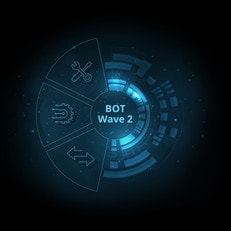Global outsourcing survey 2024 has been saved

Analysis
Global outsourcing survey 2024
Multidimensional sourcing: Orchestrating the extended workforce ecosystem
Explore content
Organizations today leverage various alternatives to source talent, skills, and capabilities. Our latest global outsourcing survey report includes insights from more than 500 executives globally on the evolution of talent sourcing, impact of AI, resurgence of global in-house centers, and the need to think differently on how to govern and manage the extended workforce ecosystem.
Dive into the insights and strategies that are helping organizations master the complexities of multidimensional sourcing.
Authors: Karan Aneja | Juan Coronado | Mike Stoler
4 key findings from the 2024 global outsourcing survey
The digital workforce, consisting of AI-enabled workers and automation bots, is emerging as a distinct talent model. Of surveyed executives, 83% are leveraging AI as part of their outsourced services (AI-powered outsourcing), and 20% are already developing strategies to manage these digital workers. Despite high interest, tangible benefits such as productivity gains or cost reductions have been limited due to challenges in governance and contracting for AI requirements. To fully realize AI’s potential, organizations must collaborate closely with vendors, establish robust AI governance, develop comprehensive digital workforce strategies, and identify and implement AI use cases. The increasing integration of AI into outsourcing is gradually transforming service delivery models across industries.

The future of talent sourcing lies in a balanced approach across sourcing models. Organizations are rethinking their talent strategies to gain more control and build strategic capabilities internally. Insourcing is on the rise and Global In-house Centers (GICs) are regaining momentum. Many organizations are adopting innovative models like Build, Operate, Transform, and Transfer (BOTT) to streamline GIC implementation. This trend reflects a balanced approach, combining outsourcing, insourcing, and GICs to achieve strategic flexibility, optimize costs, and enhance service delivery.

Despite increases in insourcing, investments in third-party outsourcing continue to grow. While back-office outsourcing remains common, organizations increasingly focus on front-office and core capabilities like sales, marketing, and R&D to unlock incremental value. Outcome-based delivery models have increased in adoption in favor of results-driven relationships. Skilled talent and agility join cost reduction as key drivers for outsourcing.

As organizations adapt to a multidimensional talent landscape, they face challenges due to the maturity of their internal governance and management capabilities. With different sources to access talent, capabilities, and skills, defining and holistically managing the “extended workforce” becomes critical for organizations. Expanding the remit of Vendor Management Office (VMO) to manage the entire extended workforce is a pathway to systematically manage the growing complexity of sourcing.

Outsourcing decisions continue to evolve, driven by factors such as AI-powered outsourcing, a focus on value, and changing talent strategies. A complex talent landscape—including the retained organization, an outsourcing ecosystem, GICs, and a digital workforce—requires a new approach: Multidimensional sourcing: Orchestrating the extended workforce ecosystem.
Download the full report to explore our comprehensive findings, executive insights, and strategies to optimize your sourcing model for sustainable business impact.

Operate services
Learn how Deloitte helps manage and maintain core business processes and functions.
http://www.deloitte.com/operate
Access previous editions of Deloitte's global outsourcing survey
2022 global outsourcing survey: executive summary
2020 global outsourcing survey: executive summary
Recommendations
Monitor Deloitte: Engineering business strategy advantages
Monitor Deloitte business strategy consultants create tangible impact through digital transformation and technology strategy, from design to execution.
Today’s wave of ‘Build-Operate-Transfer’ models
How digital transformation is driving BOT model 2.0




